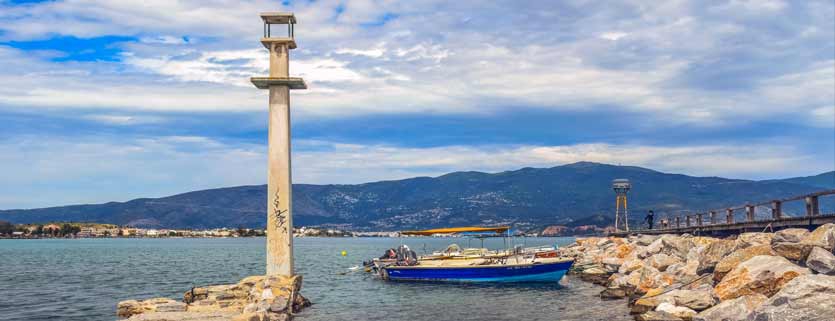An Eastern Mediterranean LNG hub
More than 2000 years ago, before the dawn of the Roman Empire, you would have been forgiven for thinking that the island world of the Eastern Mediterranean was the center of the world. Some of the most illustrious empires either had their center of power there or were bordering its shores.
Today the islands of the Mediterranean are famous for their beauty and their touristic value and as such, they are a major money spinner for the entire region.
The deep blue sea, the generous Sun, and some of the best food in the world make a vacation in this island paradise unforgettable. Except that, this is also the place where some of the dirtiest fuels the world knows are used for power generation. Especially Greece with its myriad islands is a huge consumer of coal, Heavy Fuel Oil, and diesel-fueled power generation. This is one of the very last places where HFO is still burned in Europe.
Isn’t there better?
As always, there would theoretically be solutions but the problem does not lie in the opportunity – that is manifest to insiders at least – but rather in execution and a lack of interest by the utilities to change things – so far at least. Things start to change as cheap LNG makes everyone think again.
One must understand that utility managers abhor change. Once something seems to work for them, they like to leave it in place until it falls apart or blows up. Or of course, if what exists is not sufficient anymore and new environmental legislation makes using those dirty fuels much more expensive for them. That’s when everyone gets scrambling, and we had the pressure mount in this part of the world for quite a while.
Natural Gas would, of course, be the supreme answer to this dilemma as this is also the perfect means to counterbalance the intermittency problems renewables pose. And there are always glorious plans for more windmills and solar panels so this is going to get worse. All this new intermittent capacity plus some creaking energy infrastructure is hard to balance within a huge energy network where alternative generation can be brought online rather quickly, albeit always at a cost. But on tiny islands with just thousands of inhabitants, it becomes almost impossible as there is no network balancing effect to play with.
Sadly, those islands have no access to the one thing that would solve their problems – yet.
For those not initiated in methane logistics – there are essentially two ways to move large volumes of Natural Gas around. You can either squeeze much of it into large steel tubes and make compressors push the gas from one end to the other or you can chill the gas until it condenses into a liquid and then move this in large oceangoing vessels.
A pipeline is often not an option in the Mediterranean as the sea between the islands tends to be on the deep side which makes steel tubes difficult and hence expensive to lay and operate – especially for the smallish volumes needed on one single island. LNG – on the other hand – would be a great solution to those islands if only – LNG could be served in smaller volumes.
In LNG, the world has become accustomed to the very large vessel that dumps its load at the destination. We are talking about volumes like 125.000 to 165.000 m3 of LNG in most cases. That’s a whopping 75 to 100 million m3 of Natural Gas in one scoop. This would also mean that each island would need a colossal tank to store the LNG from which it could often feed for many months, sometimes a year per filling.
As tanks are rather expensive affairs, we don’t want to blame those islanders for not having tried harder.
However, a bulk break terminal could cut up such a large cargo into many small ones (that’s what bulk break means – breaking one big bulk into many smaller scoops) would make LNG a much more interesting proposition for those islands. One 30.000m3 ship could sprinkle its load over up to 4 destinations meaning that a single drop could be as small as 10.000 m3 of LNG or 6 Million m3 of gas and even less. That’s way more palatable to those small island communities as it also only requires a much smaller tank which is hence much cheaper to build and operate. Appropriate for the community it serves.
But first things first. No small terminal without the big bulk break terminal. The ideal location for such a Bulk Breaker would be one of the large islands and upon first look, only Cyprus and Crete pop into the interested onlookers’ eye.
The reason for having a larger island hosting the bulk breaker is that this terminal is first of all still a regasification terminal. And a pretty big one at that which means that before the terminal shall do any bulk break, it shall supply the immediate surroundings with Natural Gas just as any other terminal would. This requires a substantial market for gas which can be assured on the bigger islands only.
Once the regular terminal operates normally, bulk breaking can commence – one step after the other to keep risk in check. Besides, those satellites need to be built as well and nobody will start building a satellite terminal when the hub is not pretty advanced in its project stage at the least. One wants to be sure that supply is available before committing and the satellites will depend on the hub for their entire economic survival. Nobody else can supply them easily. Remember, they are too small to land big cargoes straight.
Back to the hub – there are essentially two ways how this can be pulled off. If time is of the essence, a regular vessel can be rented and converted to a Floating Storage Unit (FSU) with some vaporizers onshore plus a jetty that can be accessed from both sides. Such a design would allow the hub to take some more time for tank building (which it will need) and still startup earlier – on a greatly reduced capacity, however. But it produces early cash flow.
The other variant would be to go for the onshore terminal straight. This puts more years onto the development timeline but then again, you won’t have to deal with a floater.
In the airline industry, hub-spoke is the standard. Passengers do the long haul between the big hubs and then fan out from them to all the smaller destinations. This would make a lot of sense in LNG too. And the Eastern Mediterranean is one of the foremost opportunities on this planet to do so.


















Leave a Reply
Want to join the discussion?Feel free to contribute!